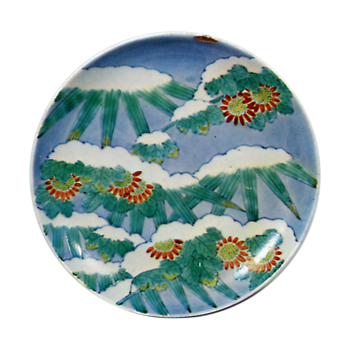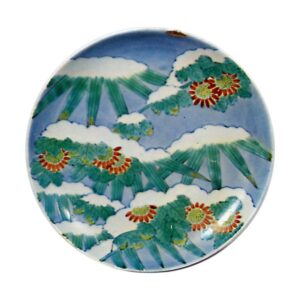
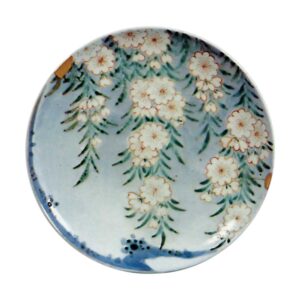
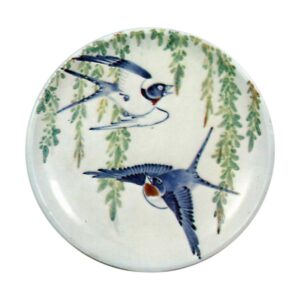
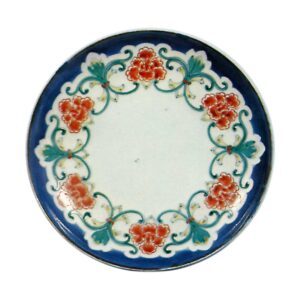
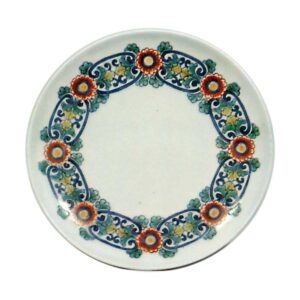
These colored Nabeshima 5-sun plates are also shallow-rise Ko-Nabeshima style plates. It is not clear whether all of them were made in the Minamikawara period, but according to “A Study of the Kilns of the Nabeshima Domain,” no fragments of shallow wooden cup-shaped dishes of this type have been excavated from the kiln site in Okawachi, so they must have been made in the Minamikawara domain.
The plate with a design of snow-mochi bamboo leaves and chrysanthemums in overglaze enamels is a rare example of this type of five-sun dish. The green paint is a refreshing coloration typical of Nabeshima. The back of the dish is covered with an ancient arabesque pattern with peonies on three sides.
The plate with weeping cherry blossom design in overglaze enamels is a plate showing weeping cherry blossoms on a light lapis lazuli ground, but the green pigment is a little too faint and the coloring is poor. The back of the dish is decorated with an arabesque pattern of five-petaled flowers arranged in six directions, and the base is decorated with a series of two-tiered heart-shaped patterns unique to Ko-Nabeshima.
The plate with willow swallow design in overglaze enamels shows two flying swallows and willow trees. The lines of the flying swallows are drawn with thick strokes and are quite powerful. There is no bone drawing, which is characteristic of Nabeshima, under the dye stain. As in the previous painting, the green overglaze painting is not well colored, and some parts of it have been changed to red. There is no design on the reverse side, but rather a series of willow leaves are thinly drawn from the front. This is also a unique piece.
The plate with peony arabesque design in overglaze enamels is covered with stylized floral arabesques unique to Nabeshima and has a dark lapis lazuli ground around the rim. The shape of the dish is shallow and flat in the old Nabeshima style, but the peony arabesques on the three sides of the reverse side are ordinary, unlike other old Nabeshima dishes.
The plate with chrysanthemum arabesque design in overglaze enamels has a design of eight flowers, connected by arabesques, which is unique to Nabeshima. The overglaze enamels are colored darkly. The back of the dish is decorated on three sides with the typical peony and branch design of old Nabeshima, and the base is covered with a heart-shaped design, as in the 97th painting.

